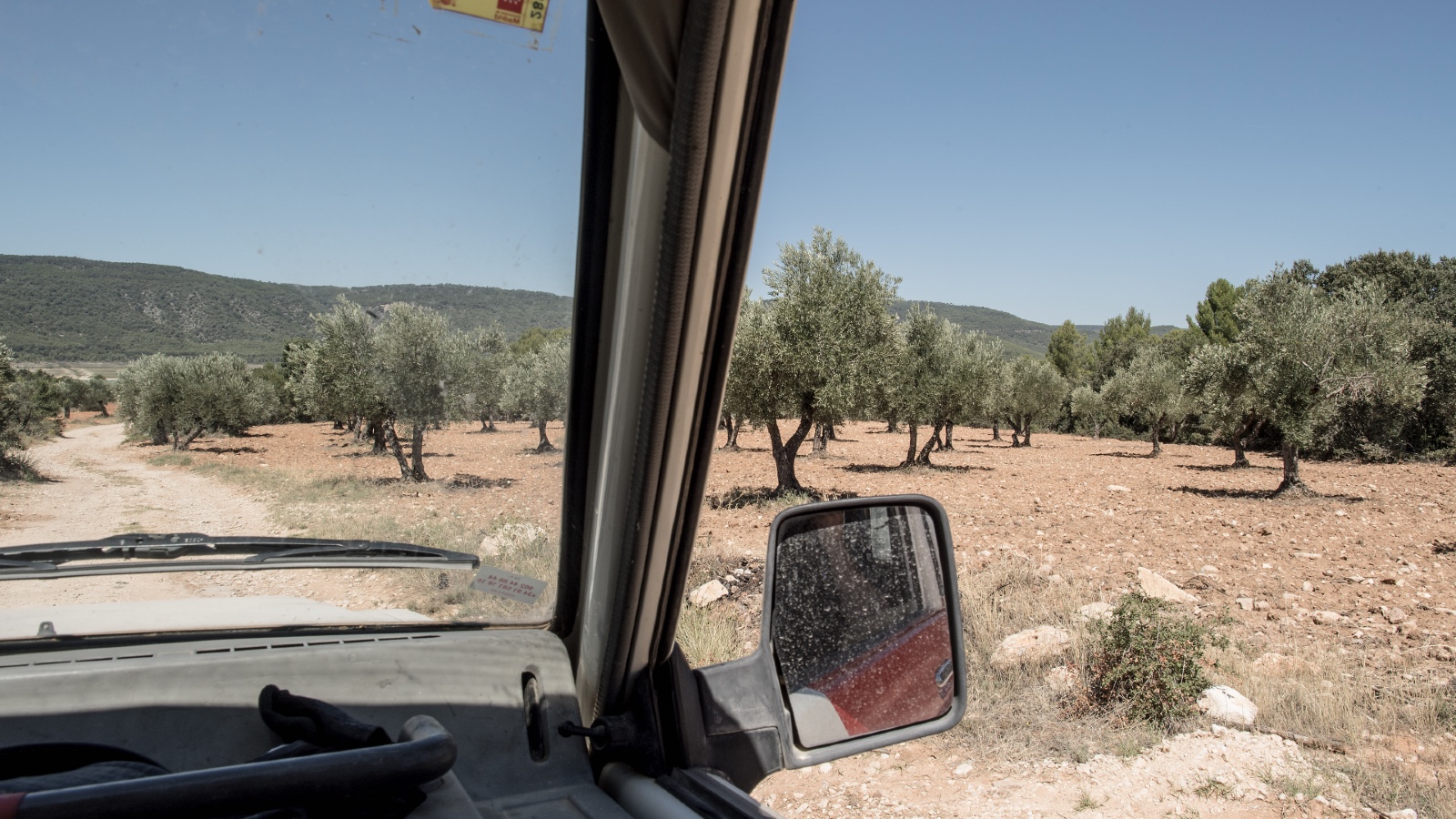Heatflation has doubled the price of olive oil over the past year.
This story is part of Record High, a Grist series examining extreme heat and its impact on how — and where — we live.
Inflation is finally easing. Americans are paying less for gas than they were a year ago. Furniture, television, and airfare prices have all fallen since last summer. Even the used car market is cooling off after its meteoric rise. But one unsuspecting staple in many American kitchens has become a prominent outlier: olive oil. The price of the already pricey liquid fat has soared to a record high this summer.
It’s the latest chapter in the annals of heatflation — when scorching temperatures harm crops and push food prices up. A yearlong drought and a spring of extreme heat in Spain, the world’s largest olive oil producer, devastated the country’s olive groves. Spanish olive oil production fell by a half — from an estimated 1.3 million to 610,000 metric tons — over the past year. Now fears are mounting over the very real possibility that the country’s inventory will run out before the next harvest begins, in October.
“For Spaniards, this is a real crisis,” Bloomberg columnist Javier Bias recently wrote. “We generously coat our food in olive oil.”
It’s also a big deal for the rest of us, given that something like half of the world’s olive oil comes from Spain. As barrels run dry, cooks around the world are paying an almost unheard of premium for the nutty, liquid gold that makes lettuce more palatable and bread more nutritious. Worldwide, olive oil now costs $8,600 per metric ton, more than twice as much as it did a year ago and nearly 14 times more than crude oil. (It would set you back around $720 to fill up the typical car’s 12-gallon tank with olive oil found on Amazon.)
What’s happening is “not normal at all,” said Kyle Holland, a vegetable oils analyst at Mintec, a food market research firm. “It was just too hot and too dry for too long.”
Olive oil is one of many foods — one of many condiments, even — that are threatened by the severe and unpredictable weather brought on by climate change. As the global temperature ticks up, droughts are occurring more frequently, heat is getting harder for farmers to manage, and wildfires and floods are becoming more menacing to growers around the world. As a result, grocery store shelves aren’t getting stocked and food prices are going up. Ultra-dry conditions in Mexico have withered peppers, leading to a sriracha shortage in the United States. Record warming has decimated Georgia’s famed peaches, which require a few weeks of cool weather each winter to blossom. Ketchup, coffee, and wine all could end up on the chopping block, too.
Olive trees are no strangers to heat, and they don’t need much water compared to other crops, like tomatoes. Humans have been cultivating them in the Mediterranean’s warm climate — and crushing them for oil — for at least 6,000 years. But even hardy olives have their limits. Temperatures above 86 degrees Fahrenheit can impair their ability to convert sunlight into energy, and prolonged dry spells can keep them from producing shoots, buds, flowers, and fruit.
Growers in the Mediterranean, a region warming 20 percent faster than the rest of the world and the source of 95 percent of olive oil production, are especially vulnerable. Drought caused Tunisia’s grain harvest to decline by 60 percent this year. And dry conditions led to poor yields for wheat and rice farmers last year in Italy, whose produce has helped build the country’s legacy of pizza, pasta, and risotto. This summer, they’ve had to contend with extreme heat, historic floods, and freak hailstorms, according to Davide Cammarano, a professor of agroecology at Aarhus University in Denmark. With such variability in weather, “it becomes very hard to manage a crop in the Mediterranean,” he said.
In a study published last year, Cammarano and his colleagues found that rising temperatures could cut the production of processing tomatoes — the sort used to make tomato sauce and ketchup — by 6 percent in Italy, the U.S., and other countries within the next three decades.
Perhaps no one this year has had it as bad as olive growers in Spain. Between October and May, the country received 28 percent less rain than usual, with the driest conditions in southern, olive-growing areas. “It’s a catastrophe,” Primitivo Fernandez, head of Spain’s National Association of Edible Oil Bottlers, told Reuters in March. Spain experienced its hottest April on record, with temperatures rising above 100 degrees F. And the heat has only gotten more punishing since, with the country now in the midst of its third heat wave of the year.
As a result, researchers predict that drought and heat waves associated with climate change will continue to take their toll on olives from the Iberian Peninsula to Lebanon. Hot and dry conditions last year scorched groves not only in Spain but also in Italy and Portugal, two of the world’s top four olive oil producers.
In the United States, too, severe weather is a concern for olive farmers, although unlike orchards in Spain that rely on rainfall, most in the U.S. are irrigated, which makes them more resistant to drought. Producers in California, the state that churns out the most olives but still contributes less than 3 percent of the olive oil consumed in the U.S., reportedly harvested one-fifth less than their historic average this season, following years of little rain that made some farmers’ wells go dry.
Winter and spring storms last spring in California eased the drought, but the cool weather and heavy precipitation slowed flowering and potentially lowered the amount of oil in each olive, according to Jim Lipman, chief operating officer at California Olive Ranch in Chico, the country’s biggest olive oil producer.
In an email to Grist, Lipman said that the high prices in Europe have increased demand for California oil and that California Olive Ranch has a strong crop heading into the upcoming harvest season, which starts in October. That said, early warming followed by frost has resulted in crop disasters in two of the last five seasons.
At Burroughs Family Farm in Denair, California, production has been fairly steady over the past few years, but “this year we are on the lower side” possibly as a result of an “incredible” amount of rain, said Benina Montes, managing partner at the regenerative almond and olive farm in California’s Central Valley. In a good year, the farm’s 10 acres of olives produce up to 40 tons of oil. This year, they yielded about three-quarters of that amount.
Montes said she hadn’t been following news of the shortage in Europe. But she figures the rise in demand caused by Spain’s low inventory might have helped her business. “No wonder our olive oil has been selling well on Amazon.”


